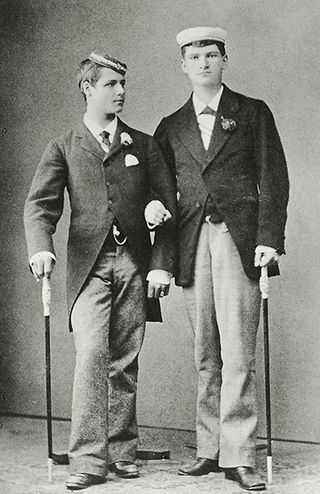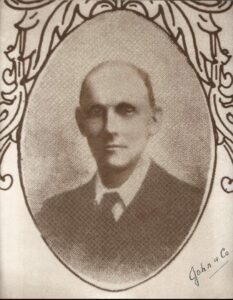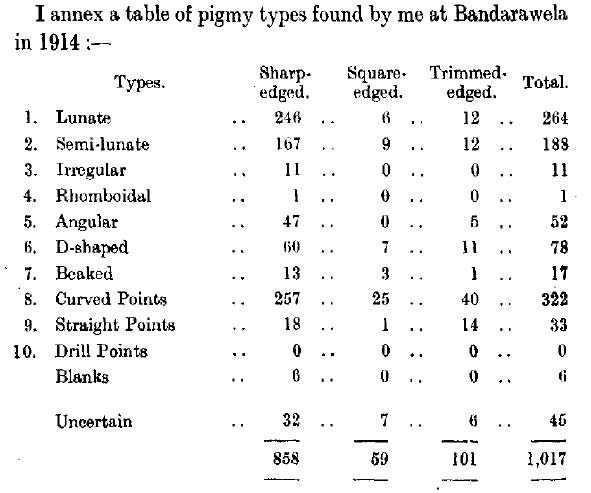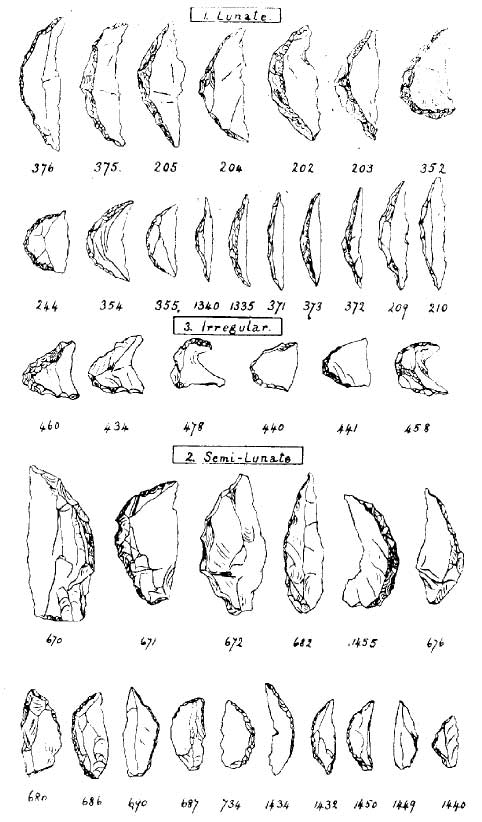A large number of open-air sites are located on the hilltops and saddles in the dry patana grasslands indicating the Terminal Pleistocene / Early Holocene microlithic phase extending into the intermediate upland Dry Zone (Zone E). Indeed the Bandarawela region is one the best-studied areas in terms of revealing the traces of Sri Lanka’s so-called Bandarawellian Culture in open-air contexts. The archaeologically richest locality for these sites is behind the present Anglican church on the Bandarawela – Welimada road. These sites were first discovered by the Sarasin brothers, two Swiss anthropologists in 1907 and secured a surface collection of stone artifacts from the hill sites around the present Anglican Church. These prehistoric sites were subsequently investigated by Seligmann‘s in 1908 prior to being excavated by Hartley in 1913 and 1914. The excavation produced a remarkably large sample of “worked†implements totaling 4,768 specimens. The “non-worked†artifacts were discorded. Hartley then proceeded to create the first formal lithic typology for Lanka’s Stone Age, employing his total sample of excavated “worked†tools as well as the surface finds for this purpose (Deraniyagala 1992). In his stone typology, Harley focused attention on the typological affinities between the microliths, which he termed “ a pigmy†of Lanka and elsewhere in the world (Harley 1913) Especially a “ pigmy†comprised a small flake with its form altered by blunting retouch; hence it did not necessarily signify a geometric microlith, although he does state that the most common type is the backed lunate, He assigns these “pigmies†to a status typologically intermediate between that of western Europe and he does not appear to have appear to have been aware o the term “Mesolothic†which he might otherwise have adopted. The Church Hill site was reinvestigated by H.A. and H.V. Noone in 1940. The occurrence of geometric microlithic promoted to designate the site Mesolithic (syn. Bandarwellian Culture, Balangoda Culture, Late Stone Age, Microlithic phase ).


During 1938-39 E.C. Worman, Jr., a postgraduate student at Harward University also described the microlithic assemblages from Bandarewela church hill as being Mesolithic. He was probably employing typological criteria, namely the presence of geometric forms as the basis of his reasoning (Deraniyagala 1992).
Bandarawellian Culture: Hartley’s excavation findings


Hartley’s excavation left several questions concerning the stratigraphy and chronology of the site unanswered. With a view to filling this lacuna, surface sampling and a limited excavation were undertaken from 8th of February until 3ith of April in 1994 at a location adjoining the present Meteorological Department bungalow where the surface scatters was observed to be dense.
The site was set out on a grid of 30m x 30m, with a sub-grid of 1- meter squares, and was excavated stratigraphically down to bedrock. The archaeological deposit averaged ca.50 cm in thickness. It comprised a lag deposit of gravels overlying decaying bedrock sealed by a collovial loam. Selected soil samples were subjected to flotation to retrieve charcoal for radiocarbon dating. Five samples were dated Beta at Beta Analytic Florida,(Table 1).
Calibrated radiocarbon dates from the excavation at Bandarawela church hill
Table 1. Calibrated radiocarbon dates from the excavation at Bandarawela church hill. The samples are bulk radiocarbon measurements made on charcoal. All samples have been calibrated using the OxCal 4.4 software and the IntCal 20 calibration curve by the present author in 2021.
| Sample | Macro-context | Lab. Code | Material | Conventional (BP) | Calibrated (cal. Years BP) (OxCal 4.4, IntCal20) |
| BCH94/NW24(2) | 1V | Beta-75027 | Charcoal | 2950 ± 70 | 3340-2886 BP |
| BCH94/NW/22/(4) | 1V | Beta-75024 | Charcoal | 3520 ± 60 | 3976-3638 BP |
| BCH94/NW/22(3) | 111 | Beta-75023 | Charcoal | 3780 ± 60 | 4404-2931 BP |
| BCH94/NW/22(7) | 111 | Beta-75026 | Charcoal | 4510 ± 90 | 5446-4870 BP |
| BCH94/NW/22(5) | 111 | Beta-75025 | Charcoal | 6380 ± 80 | 7468-7081 BP |
 The typical stratigraphic sequence from the surface downwards was as follows:
Macro-context V: Present land surface with dry patana grass and lag deposits of artifacts ranging from recent to prehistoric. Heavy concentrations of stone artifacts in places.
Micro-context 1V: Recent colluvium, ca.3-20 cm thick, comprising a brown loam of sandy silt with artifacts ranging from recent (eg, glass) to Mesolithic stone tools. The compaction was medium–loose. The texture of this deposit appears to be the result of sorting by worm action. The density of artifacts within this stratum was low, compared to the underlying macro-stratum 111. Two radiocarbon dates of ca. 3976 and-3638 cal BP have been obtained for this deposit.
Macro-context111: A lag deposit of light brown silty sandy gravels, ca.10-25 cm thick, with somewhat looser compaction than stratum 1V due to its gravelly texture. The gravel included numerous ironstone nodules (which are the product of pedogenic processes). Mesolithic artifacts were observed to occur in greater profusion than in context 1V. They were present throughout this stratum, with the heaviest concentration occurring in its uppermost horizon which has been radiocarbon dated to ca. 4404-2931 Â cal BP. The artifact density decreased with depth. Charcoal from an intermediate horizon has a date of ca. 5446-4870 cal BP, while the lowermost horizon, representing the interface with the ancient ground surface of decayed bed-rock, has been dated to 7081 to 7468 cal BC.
Macro-context 11:Ancient land surface. Artifacts occurring on it are assumed to derive from stratum 111.
Macro-stratum 1. The upper levels represent the “B†soil horizon of Red-Yellow Podzol. It is ca. 5-15 cm thick and light reddish yellow in colour. This phases downloads into a pale “C†horizon of unknown depth.
The stone artifacts have been classified according to the system formulated by S.U. Deraniyagala in 1988 which is published in Memoir volume 8 of this Department entitled The Prehistory of Sri Lanka. The industry is characterized by geometric and back microliths. Hence, it may be assigned to the microlithic phase of Sri Lanka. The radiocarbon dates indicate that the site was occupied between 7468- 2886 cal BC.
In summary, open-air site of Bandarwela is highly distinguished by the presence of prehistoric habitation deposits dated back to the Late Holocene hunter-gatherer occupation. There are likely to be hundreds of Stone Age sites associated with lag deposits as suggested by the results of the excavation in 1994. In view of the rapid development that is currently taking place in the vicinity of the open-air prehistoric site of Bandarawela, it would be highly desirable to protect the site for the future generation as matter of urgency. AÂ discrete research programme is required to investigate the Bandarawela church hill sites systematically. Their potential is considerable: research on hunter-gatherer-archaeology in central high land continues to be an uncharted field and in addressing major issues in South Asian prehistory.
Dr. Nimal Perera
Former Deputy Director-General, Department of Archaeology
Cover image: Saman Eregama
Selected Bibliography
Deraniyagala, S.U. 1988. The Prehistory of Sri Lanka: an Ecological Perspective, 1st ed. PhD dissertation, Harvard University. Ann Arbor, Michigan: University Microfilms, publ. no. 8820579.
Deraniyagala, S.U. 1992. The Prehistory of Sri Lanka: an Ecological Perspective, 2nd ed. Colombo: Archaeological Department of Sri Lanka.
Deraniyagala, S.U. 1994. Administration Report of the Director-General of the Department of Archaeology for 1994.Colombo: Sri Lanka Government.
Hartley, C. 1913. The stone implements of Ceylon. Spolia Zeylanica 9(34):117-23.
Hartley, C. 1914. The Occurrence of pygmy implements in Ceylon. Spolia Zeylanica 10(34):54-67.
Noone, H.V.V. 1945. Stone Age relics at Bandarawela. Loris 4: 263-66.
Noone, N.A and H.V.V. Noone 1940. The stone implements of Bandarawela (Ceylon). Ceylon Journal of Science (G) 3: 1-24.
Perera, H.N. 2010. Prehistoric Sri Lanka: Late Pleistocene Rockshelters and an Open-Air Site. British Archaeological Report (international series) 2142. Oxford: Archaeopress.
Perera, H.N, N. Kourampas, I.A. Simpson, S.U. Deraniyagala D. Bulbeck, J. Kamminga et al. 2011. People of the ancient rainforest: Late Pleistocence foragers at the Batadomba-lena rockshelter, Sri Lanka. Journal of Human Evolution 61: 254-269
Seligmann, C.G and B.Z. Seligmann. 1911. The Veddas. Cambridge University Press.


